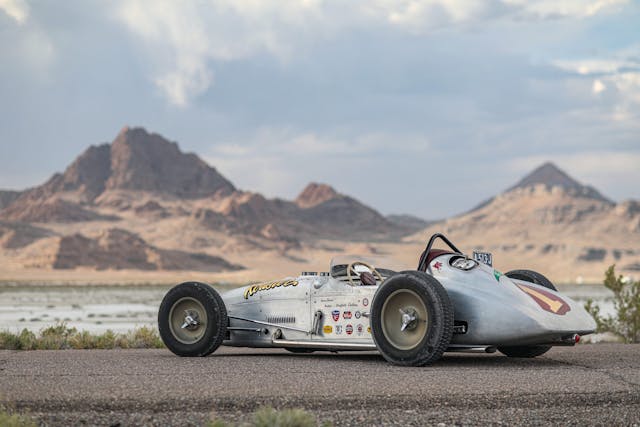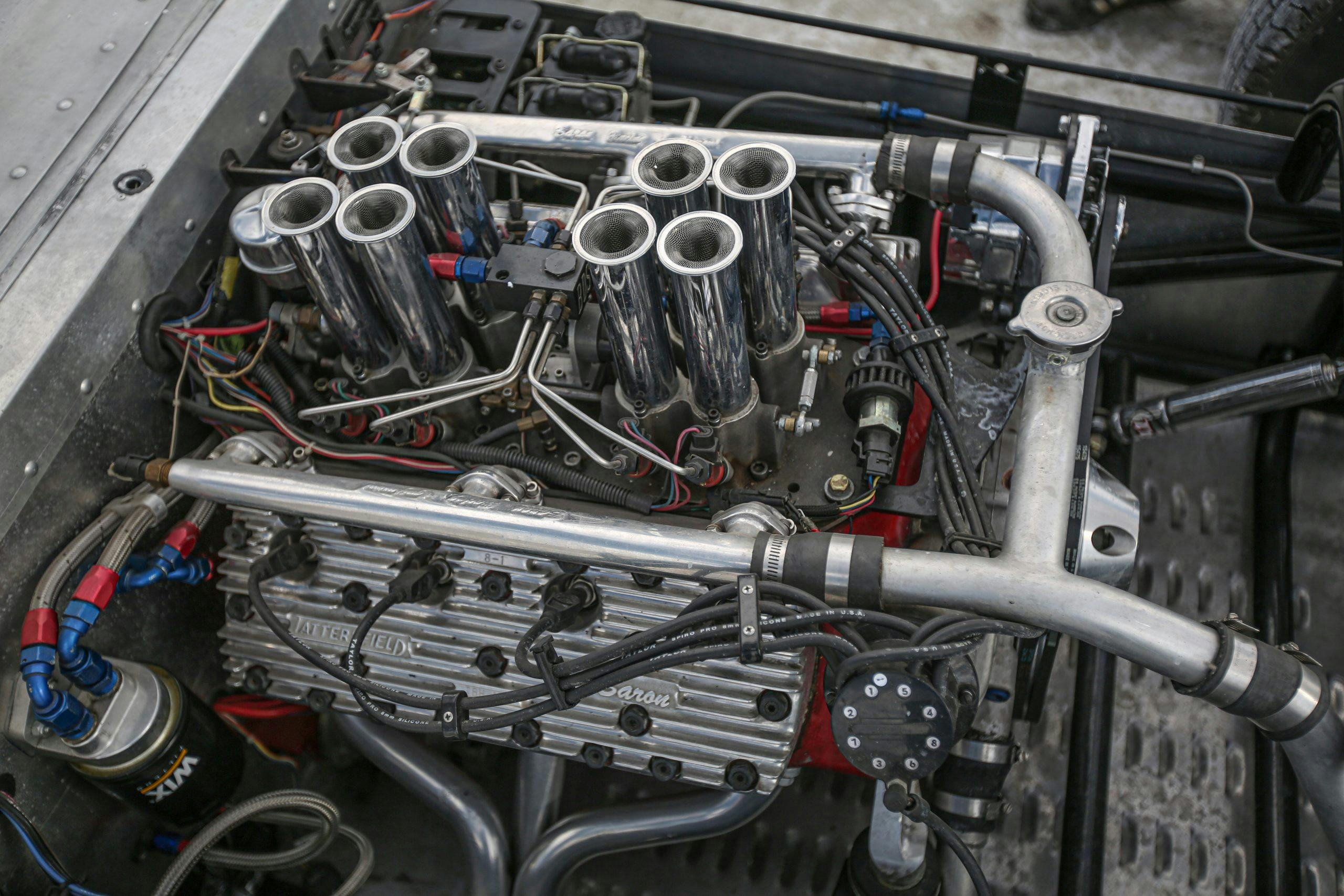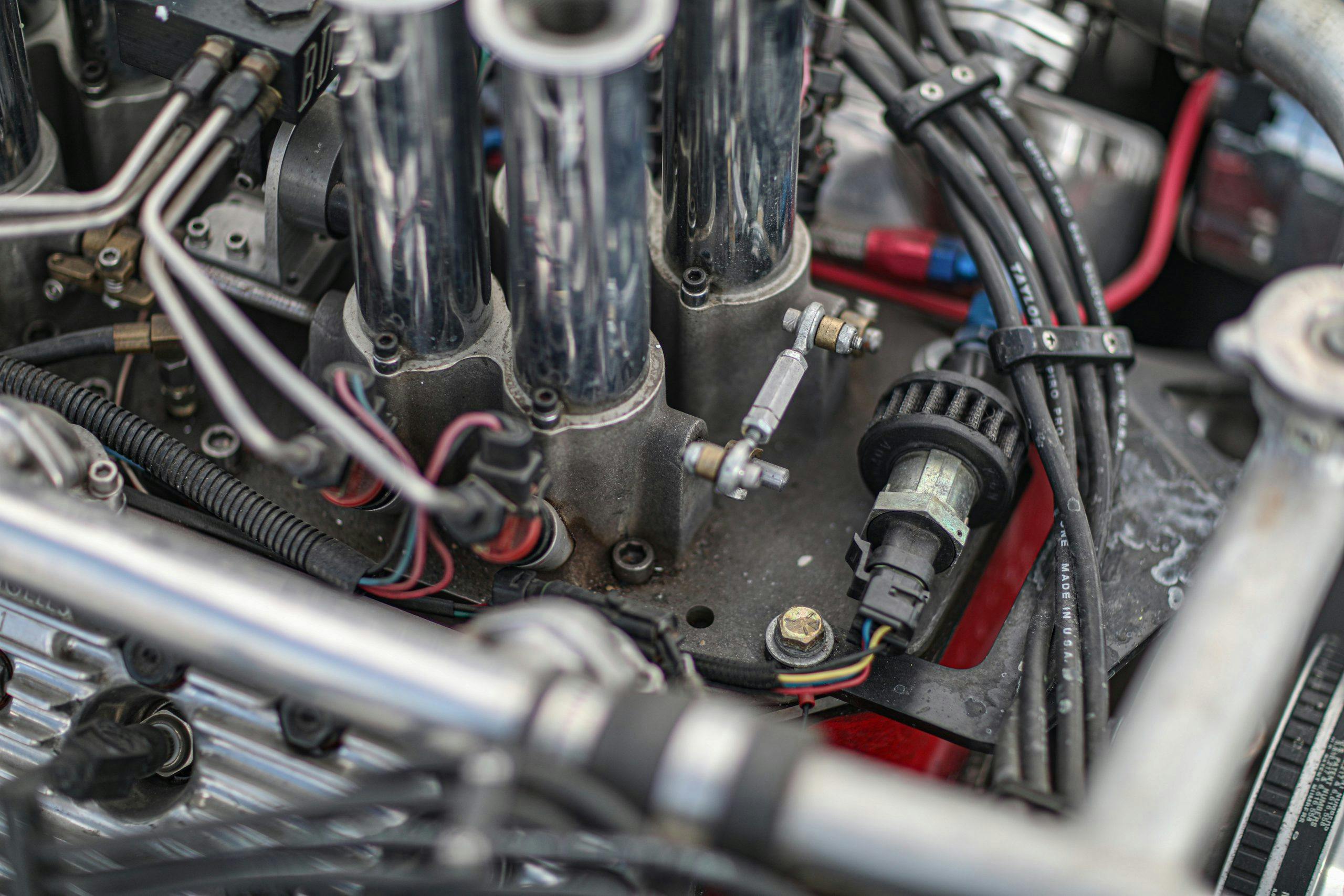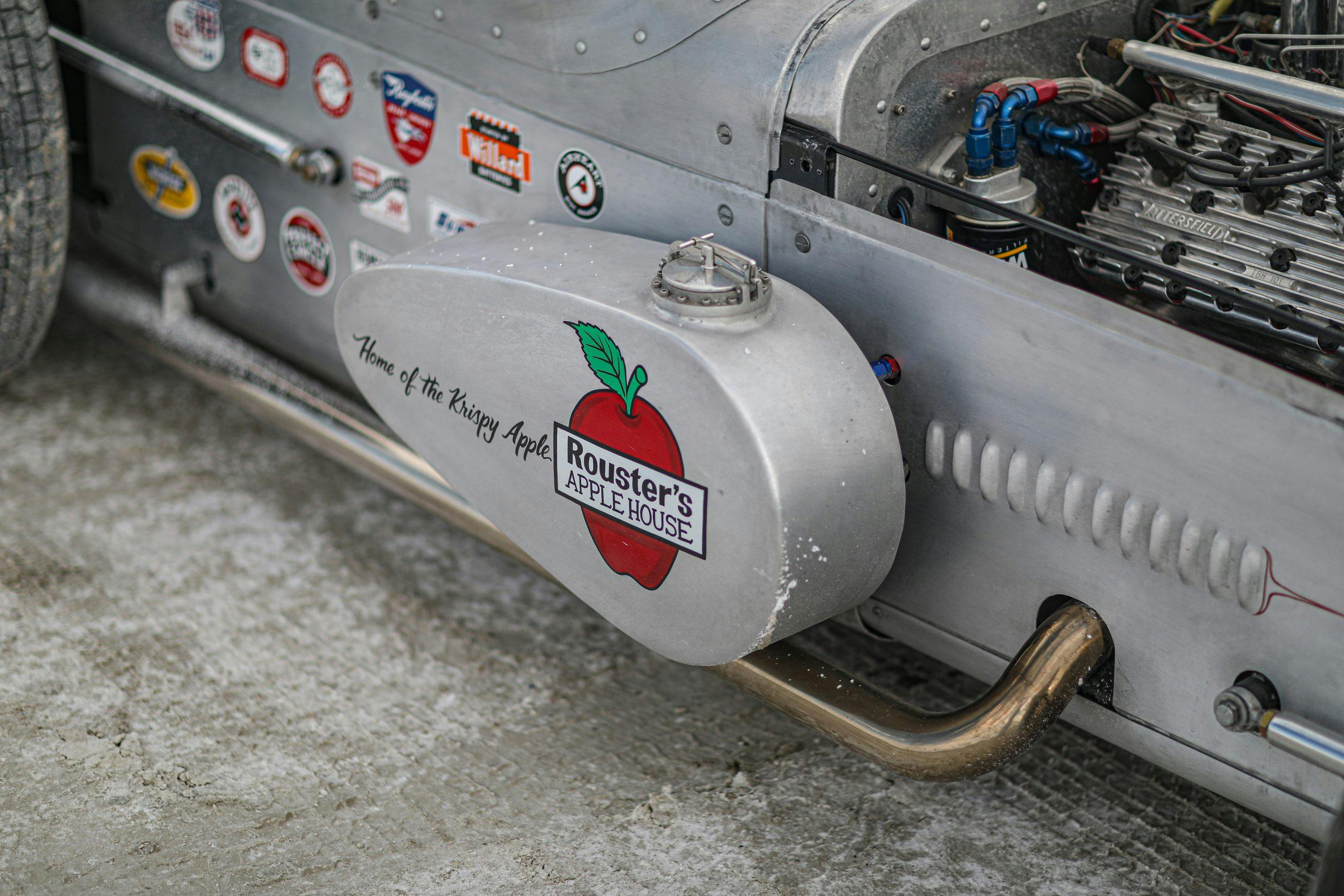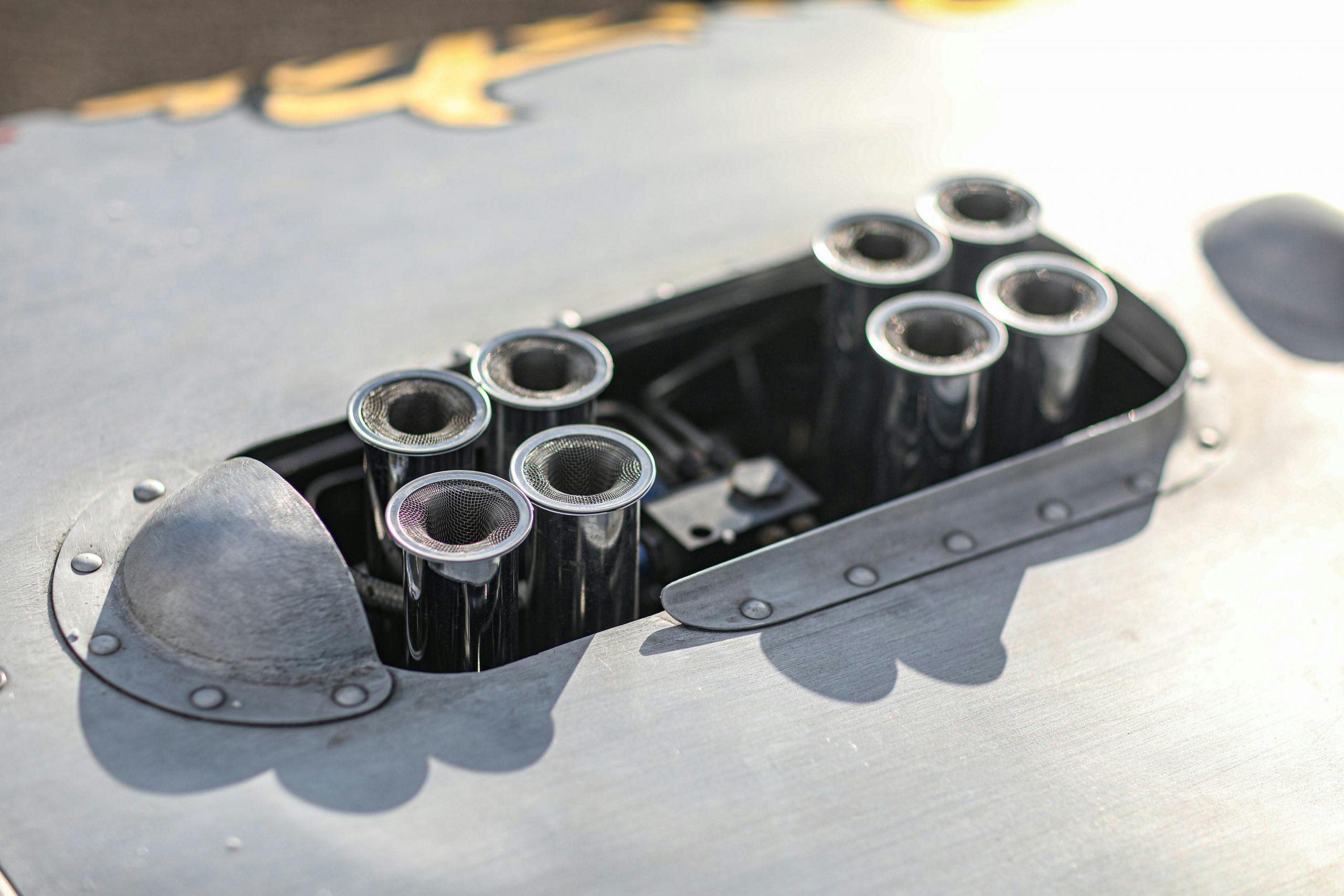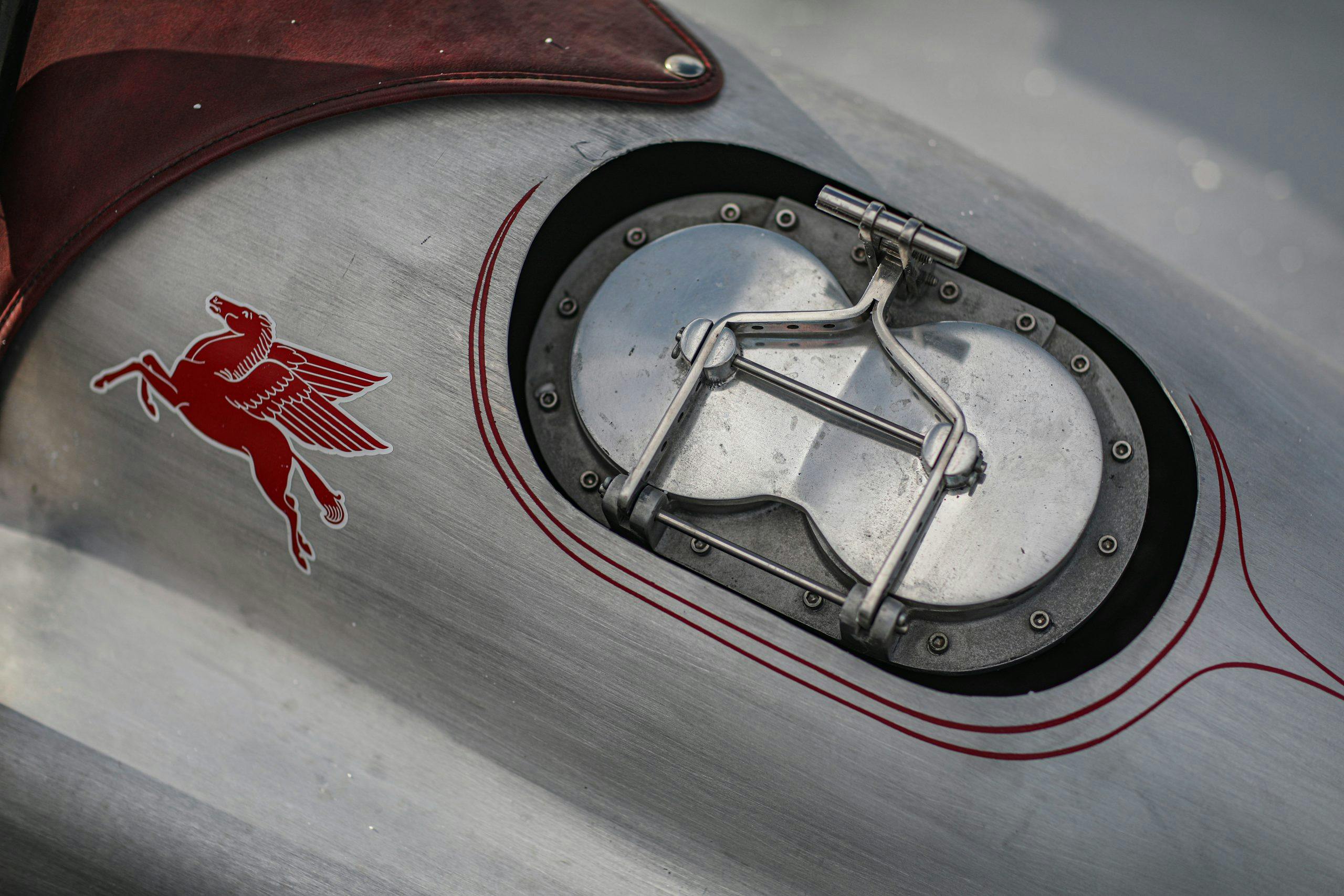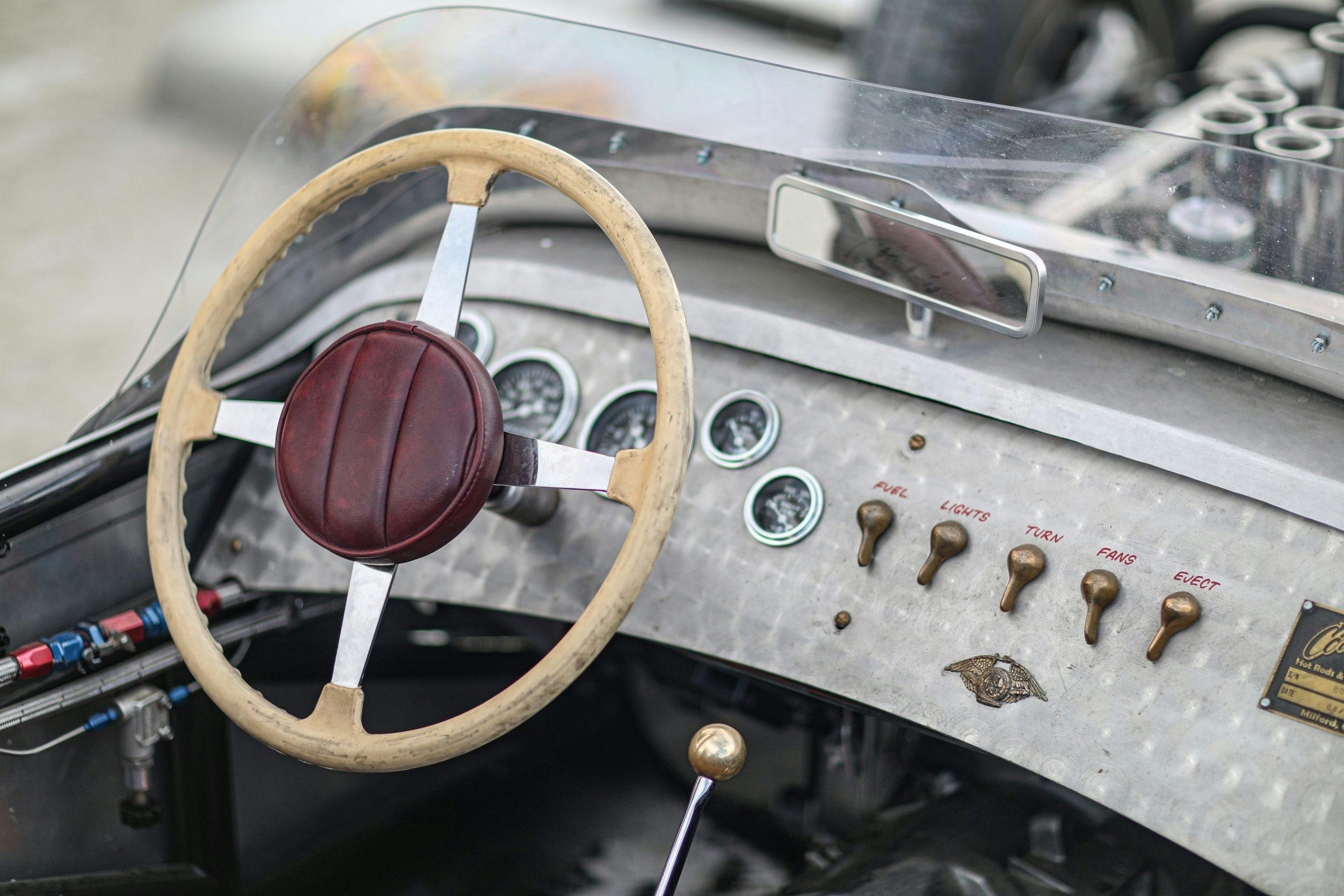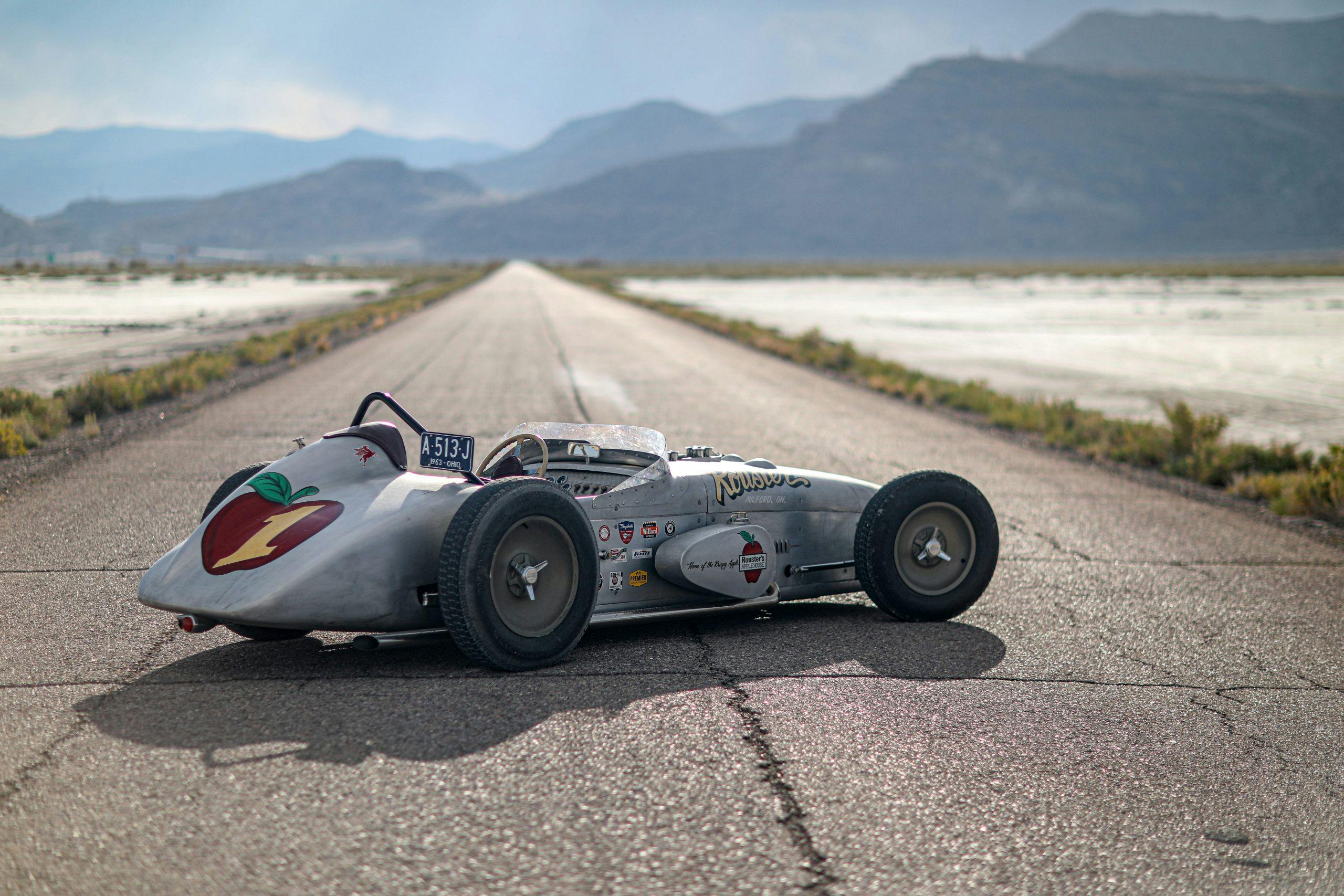This bare-metal homage to Indy roadsters was built, wrecked, and lovingly resurrected
You’ll see all kinds of eclectic creations at Bonneville Speed Week. Competitors range from minuscule motorcycles to gargantuan semi-trucks. What you may not be prepared for, however, is the amazing variety of cars driven by the spectators—or, in this case, by an SCTA tech inspector. Mike Wagner, the owner and operator of Cornfield Customs in Milford, Ohio, was helping tech the hundreds of entrants that vied to set records on the salt, but his ride for the week pulled our attention away from the racers.

Wagner is a metal shaper and chassis fabricator with dozens of custom street-rods, land-speed cars, and road race cars under his belt. When Dan Rouster dreamed of a road-going, two-seat Indy roadster, he turned to Wagner and Cornfield Customs to make it happen. The basic idea was to scale up a 1963 AJ Watson Indy car to fit two people. With that in mind, Joshua Shaw created one rendering and Root Brothers Customs came up with another. Both wound up being very close to the final product you see here.
“They were good guidelines,” Wagner says. “Both were pretty close, but we modified things as they came into reality.” The finished car, which required nearly two years to complete, adopted some of the design cues of an Epperly roadster, owing a bit to the stretched proportions. Regardless, the results are phenomenal and the car has a fantastic presence on the road.
Rouster is the proprietor of Rouster Apple House, which is also in Milford. As a nod to the business, Joshua Shaw lettered the car front and rear with an apple, rather than a traditional round “gumball,” as the background for its #1. Unfortunately, not long after the car’s completion, it was involved in an on-road collision that damaged the body and the chassis. Wagner bought the car and spent a year going through the car as a personal project, straightening the frame, repairing the bodywork, and fixing the damaged front suspension links and mounts. Now the car is back on the road—and, occasionally, the track—looking as good as ever and sounding amazing as well.
Here are some of the details behind the build.

Wagner built the car’s chassis using 1.75-inch DOM tubing based on the original design of a Watson Indy roadster. The upholstery on the seats, headrest, and steering wheel pad is from Stewart Hot Rod Upholstery in Sunbury, Ohio.

The front and rear suspension are both torsion-bar four-links with a Panhard bar. In the front, the torsion-bar link serves as the top control arm to locate the WAC Customs axle. In the rear, where a Winters quick-change resides, the torsion bar link functions as the bottom arm. Suspension and steering components are from Schroeder and J&J Auto Racing.
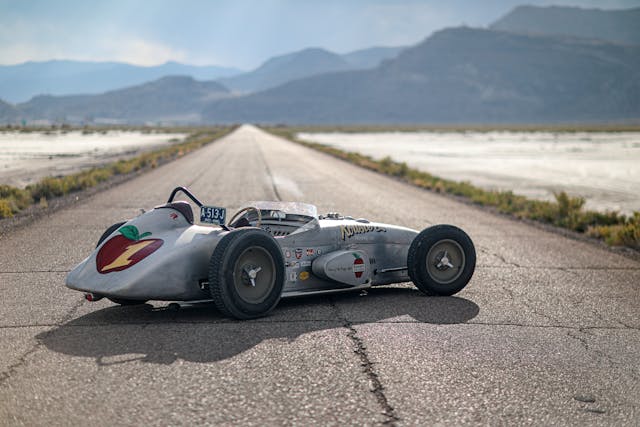
Starting with a plywood buck, Wagner formed the body of the roadster from .063-inch 3003 H14 aluminum, using a power hammer to create all the proper ’60s-style curves.
One of the few aspects of the build that Cornfield Customs didn’t handle was the assembly of this 304-cubic-inch Ford flathead V-8. The electronic fuel-injected engine uses a Hillborn manifold that was intended for mechanical fuel injection. Rather than weld in injector bungs and risk warping the casting, the bungs are pressed in place. The cylinder heads are from Baron and the additional water inlets are fed with a Chevy 409-style water pump. It produces somewhere in the range of 200 horsepower.
Some of the car’s best details come courtesy of readily available production parts. For example, the staggered 16- and 18-inch wheels, coated to look like the vintage Dow 7, are from Rocket. Likewise, the gauges are from Stewart Warner. Other parts required some specialized craftsmen. The fuel filler, the cap for the oil tank, and the brass toggles on the dash are all from Crafty-B.
Of course, the details are just icing on the cake. The real magic comes from this vintage two-seat roadster that never was, which saw the light of day only to get badly damaged … and then to be resurrected from the wreckage. Make a trip to Cornfield Customs to see this beauty in all its bare-metal glory, or perhaps use it as yet another reason to make the trek to Speed Week next year.
